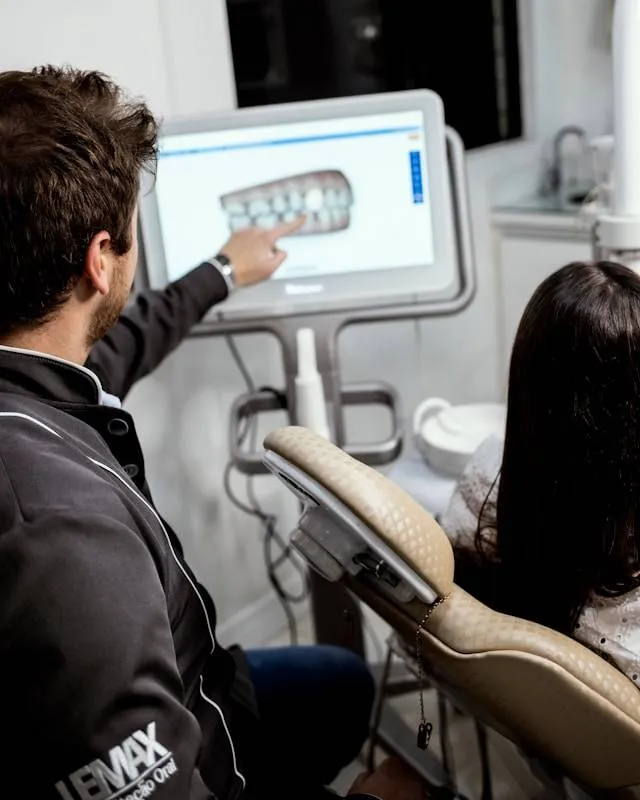1. Introduction: Overview of early and late braces for buck teeth
Protruding teeth, also known as buck teeth, is a condition in which the upper front teeth protrude too far forward compared to the lower front teeth, causing loss of aesthetics and affecting chewing function. Braces for protruding teeth are an orthodontic method that helps teeth move to the correct position, improve bite and bring a confident smile. However, many people wonder whether braces for protruding teeth early or braces for protruding teeth later will be more effective? This article will provide detailed information so you can make an informed decision.
Why should you care about the timing of braces for buck teeth?
The timing of braces for buck teeth plays an important role in determining the effectiveness and duration of treatment. Early braces can take advantage of jaw bone growth to adjust teeth more easily, while late braces may require more complex measures to achieve the desired results. Understanding the advantages and disadvantages of each time will help you choose the most suitable method.
2. What are buck teeth and the levels of buck teeth?
Protruding teeth are a type of malocclusion in which the upper front teeth protrude too far forward compared to the lower front teeth. The degree of protrusion can vary from mild to severe, affecting aesthetics and function.
Classification of buck teeth: buck teeth, buck jaw, and mixed buck teeth
Protruding teeth: Only the front teeth protrude, the jaw bone develops normally. This condition is often caused by bad habits from childhood such as thumb sucking, tongue thrusting.
Prognathism: The upper jaw bone is overdeveloped, pushing the teeth forward. This is a problem related to bone structure.
Mixed protrusion: Combination of both factors above (both teeth and jaw protrusion).
3. What is early braces?
Early braces are orthodontic interventions when children are still in the mixed dentition stage (6-12 years old) or before puberty. At this time, the jawbone is still soft and pliable, making it easier to adjust the teeth and jaw.
Advantages of early braces (before puberty)
Take advantage of jaw bone growth: Easily adjust jaw bone growth, helping teeth grow in the right position.
Shorter treatment time: Because the jawbone is still soft, teeth move faster.
Less painful: Gentle force, less uncomfortable for the baby.
Prevent more complicated dental problems in the future: Help children have beautiful, even teeth and a standard bite, reducing the risk of tooth decay and gingivitis.
Improve children's aesthetics and confidence: Help children become more confident in communicating and integrating with friends.
Popular methods of early braces
Trainer: A removable appliance that helps correct bad habits and guides teeth into the correct position.
Jaw expander: Widens the jaw to create space for teeth to grow.
Metal or ceramic braces (mini): Use small braces to adjust teeth.
Suitable subjects for early braces
Children have buck teeth due to bad habits (thumb sucking, tongue thrusting).
Children have uneven jaw development.
Children have crooked teeth due to lack of space.
4. What is late braces for buck teeth?
Late braces are orthodontic treatments done when the jawbone has fully developed (after puberty or adulthood). At this time, the jawbone is harder, adjusting the teeth becomes more difficult and may require more complex measures.
Advantages of late braces for buck teeth (after puberty or in adulthood)
Stable results: Teeth have fully grown and jawbones have stabilized, helping braces results to be more durable.
Many orthodontic options: You can choose from cosmetic orthodontic options such as clear braces (Invisalign).
Popular methods of braces for late buck teeth
Metal braces: Traditional method, highly effective and low cost.
Ceramic braces: More aesthetic than metal braces.
Clear braces (Invisalign): Highly aesthetic, comfortable and easy to clean.
Jaw surgery combined with braces: Applied for severe cases of jaw protrusion.
Suitable subjects for late buck teeth braces
Adults with buck teeth.
People who missed the early braces time.
People who want to improve aesthetics and chewing function.
5. Detailed comparison: Early braces for buck teeth and late braces for buck teeth
| Characteristic | Early braces for buck teeth (before puberty) | Late braces (post-puberty/adulthood) |
| Effective | High, easy to adjust jaw bone | Still effective, but harder to adjust the jawbone |
| Time | Shorter | Longer |
| Expense | Usually lower | Usually higher |
| Aesthetics | Fewer aesthetic options | More aesthetic options (Invisalign) |
| Comfort level | More comfortable | Can be more uncomfortable |
| Complications | Fewer complications | There may be more complications |
6. Popular methods of braces for buck teeth today and their effectiveness
Advantages: Low cost, high efficiency, suitable for many cases.
Disadvantages: Not very aesthetic, can cause discomfort.
Ceramic braces: Advantages and disadvantages
Advantages: More aesthetic than metal braces.
Disadvantages: More expensive, more fragile than metal braces.
Invisalign: Pros and Cons
Advantages: High aesthetics, comfortable, easy to clean.
Disadvantages: Highest cost, only suitable for mild to moderate cases.
Self-ligating braces: Pros and cons
Advantages: Reduces friction, can shorten treatment time.
Disadvantages: Cost is higher than conventional braces.
Invisalign (Trainer, Removable Appliances): Advantages and Disadvantages
Advantages: Early intervention, bad habit correction, easy to remove.
Disadvantages: Only effective in mild cases, requires the child's cooperation.
7. Standard medical braces procedure for buck teeth (for both early and late braces)
Examination and consultation
The doctor will examine your teeth, assess your overbite, and advise on appropriate braces.
Diagnostic imaging (X-ray) and dental impressions
X-rays help the doctor evaluate the jaw bone structure and tooth position. Take dental impressions to create a model of the jaw.
Detailed treatment planning
The doctor will create a detailed treatment plan, including the length of time the braces will be worn, the type of appliance used, and any adjustments.
Attach braces/ wear aligners and have regular check-ups
The doctor will attach the braces or give instructions on how to wear the aligners. The patient needs to have regular check-ups so the doctor can check the progress and adjust the pulling force.
Maintenance phase after braces removal
Once the teeth have moved into the correct position, the patient needs to wear a retainer to keep the teeth stable.
8. Proper oral care during braces for buck teeth (for both early and late braces)
Detailed instructions for oral hygiene
Brush your teeth at least twice a day with a soft-bristled toothbrush and fluoride toothpaste.
Use dental floss to clean between teeth.
Use an interdental brush to clean around the braces.
Rinse mouth with salt water or specialized mouthwash.
Appropriate diet when wearing braces
Limit sweets and carbonated drinks.
Avoid hard and chewy foods.
Cut food into small pieces.
Other important notes
Do not remove braces or aligners on your own.
Tell your doctor right away if you have any problems.
Re-examination on time.
9. Cost of braces for buck teeth: Factors affecting and comparison of costs of methods
The cost of braces for buck teeth depends on many factors:
Level of breathing.
Orthodontic method.
Dental reputation.
Doctor's skill.
The cost of clear braces is usually the highest, followed by ceramic braces and metal braces.
10. Choose a reputable dentist and orthodontist to fix buck teeth
Criteria for choosing a reputable dental clinic
Licensed to operate.
Team of doctors with expertise and experience.
Modern equipment.
Good customer service.
Reasonable and transparent prices.
Questions to ask your orthodontist
Does the doctor have experience treating cases like mine?
Which orthodontic method is best for me?
How long is the expected treatment time?
How much does the treatment cost?
Are there any possible risks or complications?
11. Possible complications when braces for buck teeth and how to prevent them
Some complications may occur:
Tooth decay.
Gingivitis.
Tooth decay.
Receding gums.
For prevention, it is necessary to practice good oral hygiene, follow the doctor's instructions and have regular check-ups.
12. Frequently asked questions (FAQ) about early and late braces for buck teeth
Does braces hurt? There may be some discomfort for the first few days.
Do I need to have my teeth extracted for braces? It depends on the condition of my teeth.
Does braces cause buck teeth to relapse? Retainers are needed to keep teeth stable.





